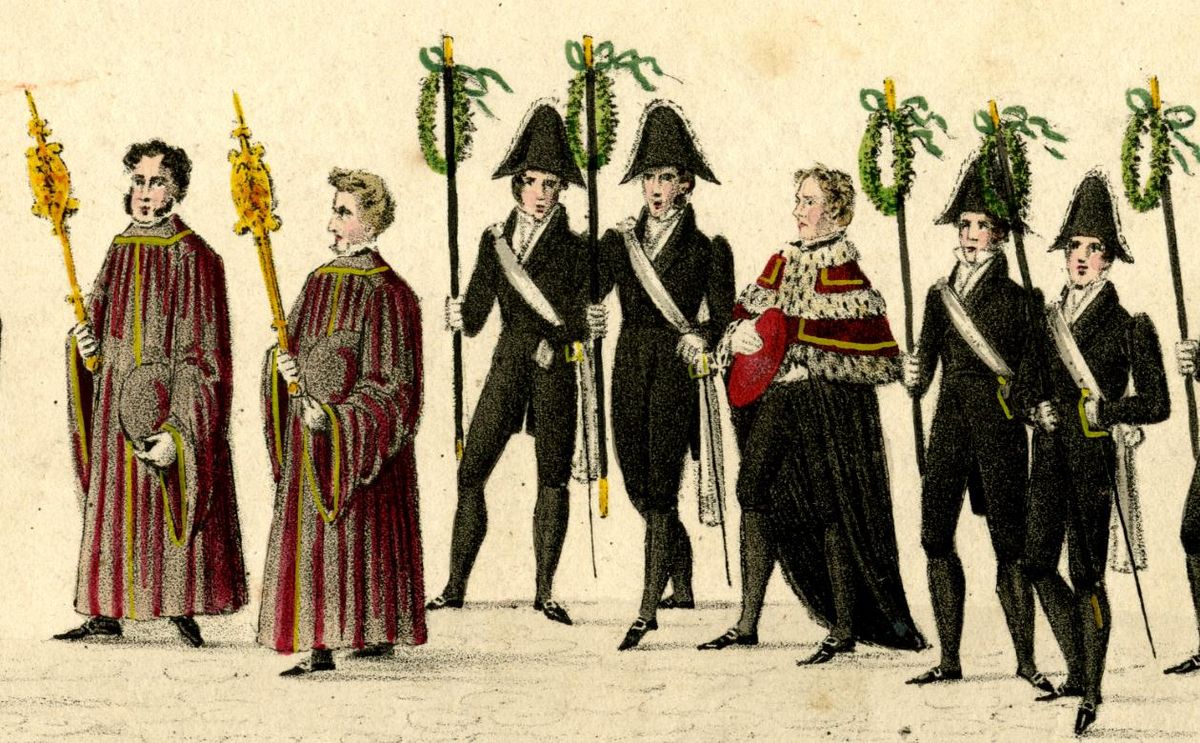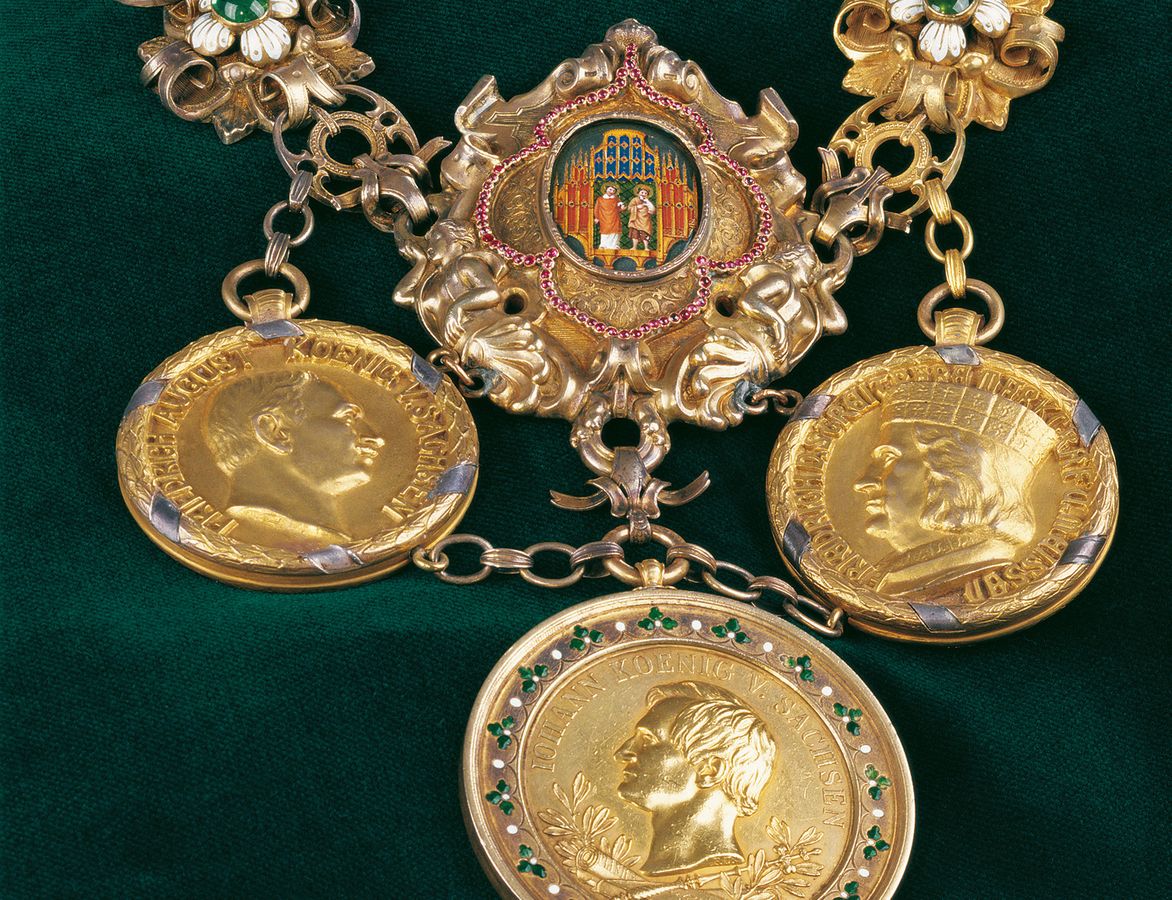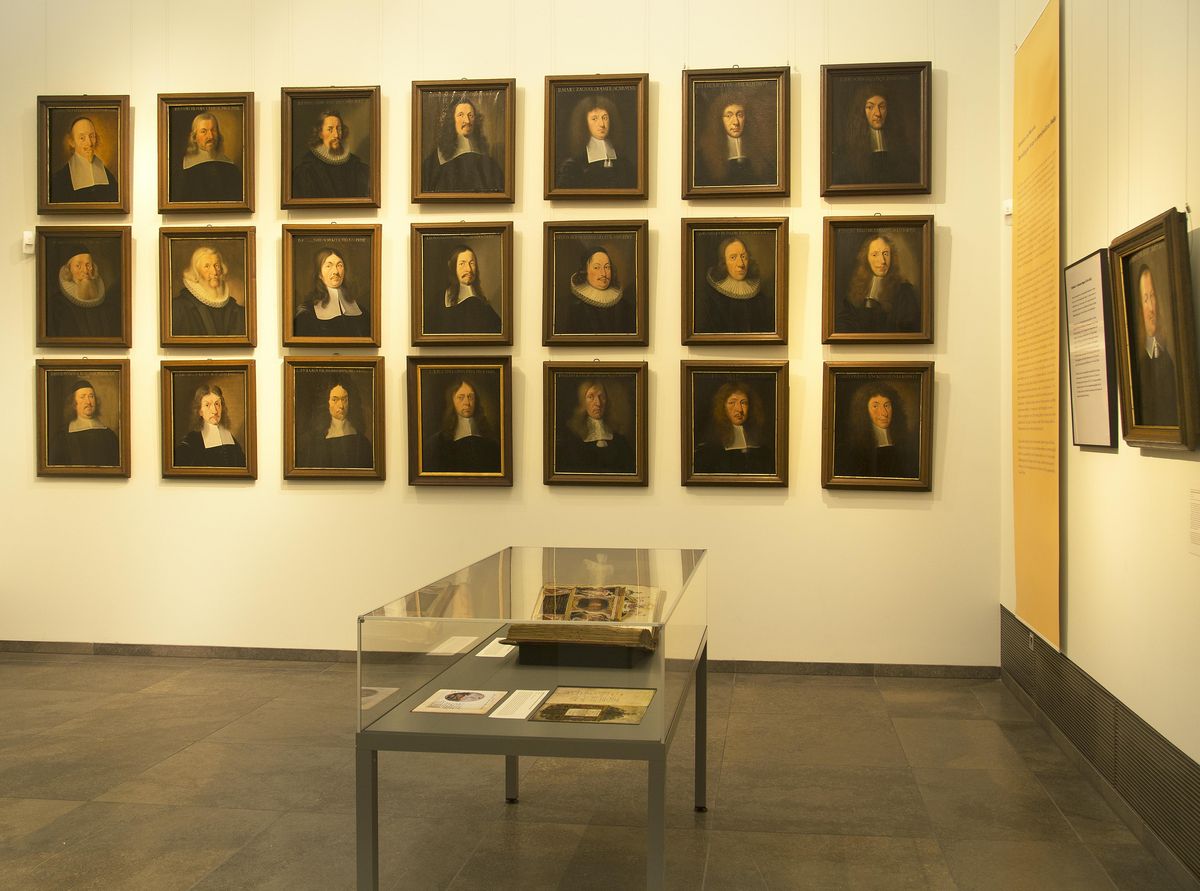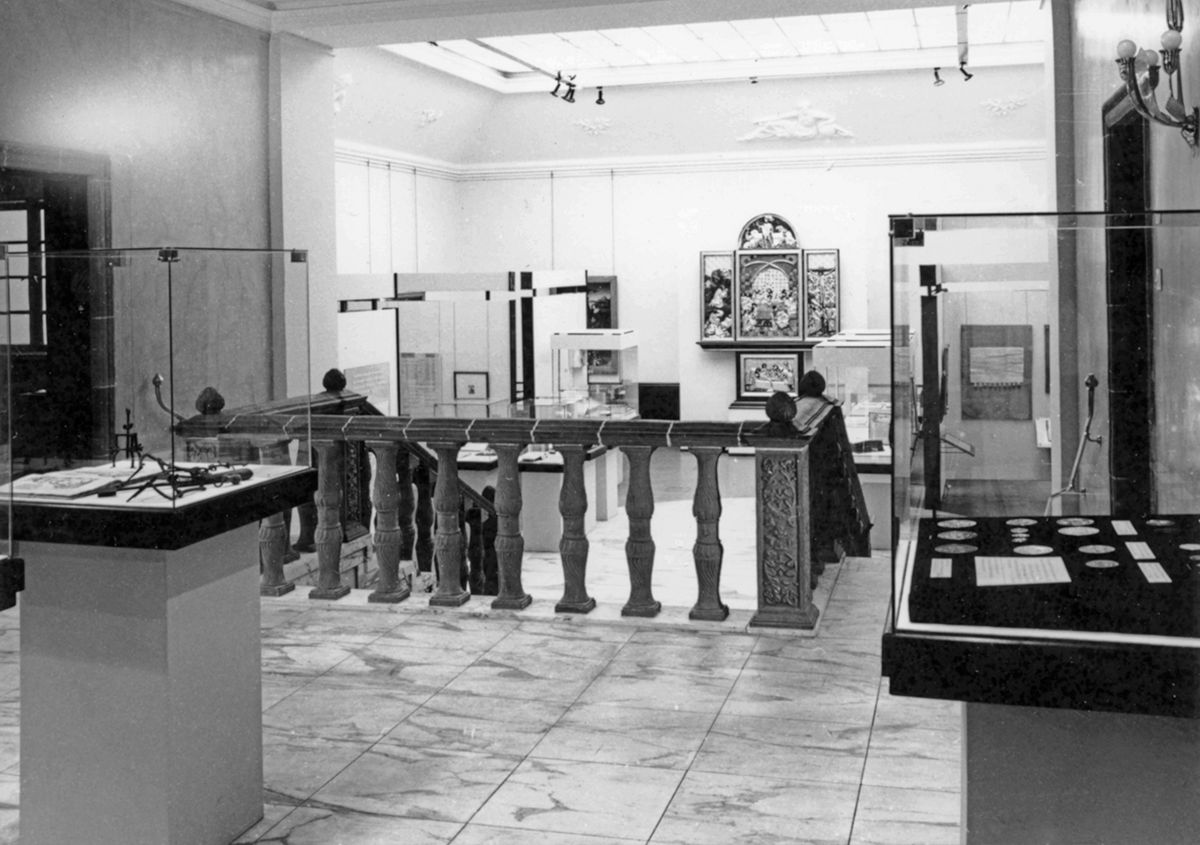The art collection of Leipzig University has grown over time, and it was only later that the objects acquired were defined as a collection. Although the University has commissioned, acquired or received ‘art’ as gifts since its foundation in 1409, it was not until the early 1970s that an art administration department was set up.
Administration of the insignia in the early period of the university
Since its foundation, the most valuable possessions of the University have been the documents and insignia that concerned the University as a whole and were directly linked to the office of the rector. Valuable items such as the statutes, matricula, scepters, seals, regalia, precious drinking utensils and tapestries were kept in precious chests. The Clavigeri (‘mace bearers’), who carried the scepters in processions and held the office of treasurer, were responsible for them. The colleges, nations and faculties also possessed valuable personal property, such as statutes, tax books, scientific literature and objects representing the corporation. These were administered by custodians, who were responsible for the general supervision of the colleges and bursas.
In the seventeenth century, the university librarian Joachim Feller (1628–1691), building on older holdings, skilfully endowed the Pauline Library mainly with portrait paintings, but also with material goods. Under his successors, too, professors were encouraged to donate their portraits to the library. In 1675, the theologian Salomon Stepner published the Inscriptiones Lipsiensis, Leipzigische Lorbeer-Blätter..., an inventory of the works of art in the city of Leipzig (albeit limited to those bearing inscriptions or identified by an accompanying text), thus also providing information on the University’s holdings, especially those of the university church and the collegiate buildings.
The first steps towards institutionalising art conservation
After the abolition of the nation structure in 1830, the academic senate became responsible for the University’s art collection.
The construction of a new main building for the state university, named the Augusteum in honour of King Frederick Augustus I, who died in 1827, was intended as a monument and ‘temple of science’. The interior design included busts in the assembly hall of people who had rendered outstanding services to the University. Furnishing the main building with works of art was an important task for the next 100 years, for which a special busts commission was set up. In 1899, the Senate set up a working group, known as the Commission for the Supervision of the University’s Art Treasures, to draw up an inventory of the University’s art holdings and, after determining the state of preservation of the works, to consider appropriate restoration and protection measures. However, conflicts of authority hampered the work, and it was not until 1913 that Felix Becker was able to produce the first inventory of the entire University. The Second World War, the destruction of the university church and the demolition of the Augusteum in 1968 led to the loss of many works of art. The GDR’s third higher education reform in 1968 transformed the University, dissolving faculties and institutes and scattering libraries and art collections.
The origin of the Kustodie
The care of the University’s works of art needed to be put on a professional footing, and the dispersal of the works of art needed to be stopped. The works of art from the demolished university church were first stored in the Dimitroff Museum (now the Federal Administrative Court) before being transferred to a church depot. In 1971, Rainer Behrends was appointed by the rector as Custodian of the Art Collections. The name ‘Kustodie’ can be traced back to 1977, but it was not until the early 1980s that additional permanent staff could be recruited. In around 1980/81, the Kustodie moved into the magazine, collection, office and administration rooms in the Kroch tower.
From 1974, the Kustodie’s art exhibitions were held in the foyer of the University Tower. In 1979, the Galerie im Hörsaalbau was opened for contemporary art. In 1983, the Kroch Tower exhibition centre was added, which initially focused more on historical and university exhibitions. A total of around 100 exhibitions were held here until 2007. From 1995, new storage facilities were built in the basement of the rectorate building at Ritterstraße 26, and a permanent exhibition of major works from the historical art collection was set up on the first floor. The Study Collection of the Kustodie opened its doors to the public in 1997. In 2002, Rudolf Hiller von Gaertringen took over as director of the Kustodie and, in addition to continuing the exhibition activities, focused on the restoration of the works of art in the university church.



